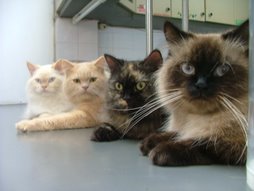Syllabic alphabets
Syllabic alphabets, alphasyllabaries or abugidas consist of symbols for consonants and vowels. The consonants each have an inherent vowel which can be changed to another vowel or muted by means of diacritics. Vowels can also be written with separate letters when they occur at the beginning of a word or on their own.
When two or more consonants occur together, special conjunct symbols are often used which add the essential parts of first letter or letters in the sequence to the final letter.
The illustration on the right shows how some of the vowel diacritics (in red) are used in the Devanagari alphabet, and also shows a number of conjunct consonants.
Syllabic alphabets currently in use
Syllabic alphabets used mainly for decorative, ceremonial or religious purposes
| Balinese | Batak | Javanese |
| Lanna | Lontara/Makasar | Ranjana |
| Redjang (Kaganga) | Sharda | Siddham |
| Sourashtra | Soyombo | Syloti Nagri |
| Tagalog | Tagbanwa |
Syllabic alphabets that are no longer used
| Ahom | Brahmi | Grantha |
| Kharosthi | Modi | Old Persian Cuneiform |
| 'Phags-pa | Tocharian |
